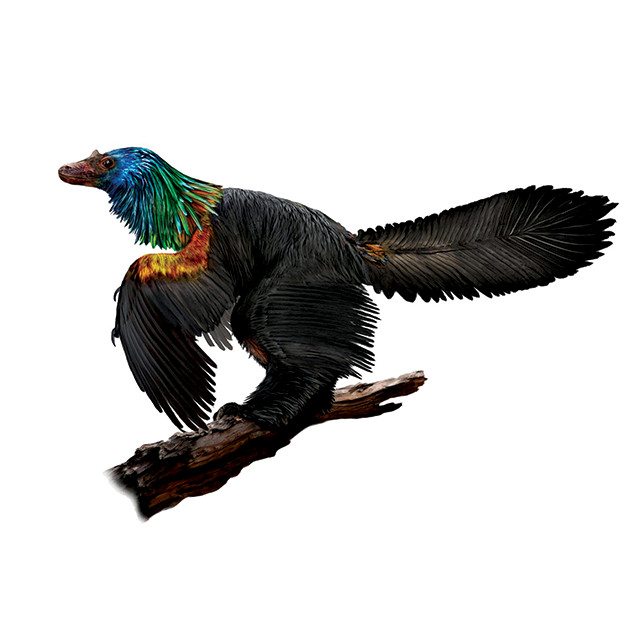
by Mary Caperton Morton Tuesday, April 10, 2018

A reconstruction of the new dinosaur species, Caihong juji. Credit: Velizar Simeonovski, Field Museum.
In recent years, many dinosaurs have gotten a fabulously feathered makeover, but for the most part, scientists still aren’t sure what colors the animals were. A new discovery of a finely preserved feathered dinosaur fossil in China suggests that some dinosaurs were as brightly colored as modern-day hummingbirds.
The fossil, described in Nature Communications, represents a new species, named Caihong juji, which means “rainbow with the big crest.” The evocative name suits the duck-sized dino, which sported a bony crest on its head and long, ribbon-like feathers. An analysis of microscopic color-bearing structures, called melanosomes, in the feathers suggested that the feathers were iridescent, similar to the most colorful hummingbirds.
“Hummingbirds have bright, iridescent feathers, but if you took a hummingbird feather and smashed it into tiny pieces, you’d only see black dust. The pigment in the feathers is black, but the shapes of the melanosomes that produce that pigment are what make the colors in hummingbird feathers that we see,” said study co-author Chad Eliason of the Field Museum in Chicago in a statement. “To find the color of Caihong’s feathers, we compared its melanosomes with a growing database of thousands of measurements of melanosomes found in modern birds.”
Caihong’s feathers were likely used for display and warmth, but the animal was not capable of flight, the researchers noted. Caihong is also the earliest-known animal with asymmetrical tail feathers, an adaptation found on modern birds’ wing tips that allows them to steer while flying. “The tail feathers are asymmetrical but [their] wing feathers [are] not, a bizarre feature previously unknown among dinosaurs including birds,” said co-author Xing Xu of the Chinese Academy of Sciences in Beijing in a statement. “This suggests that controlling [flight] might have first evolved with tail feathers.”
© 2008-2021. All rights reserved. Any copying, redistribution or retransmission of any of the contents of this service without the expressed written permission of the American Geosciences Institute is expressly prohibited. Click here for all copyright requests.